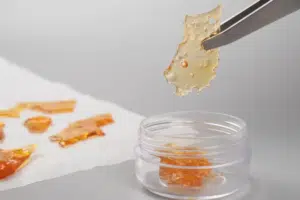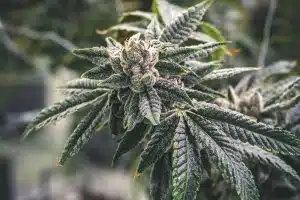For commercial cannabis processing, solvent-based extraction methods remain mainstream. If you are an enthusiast exploring solvents used for THC extraction, this guide is for you. Here, we will explore the role of this type of solvent in determining the quality, safety, and efficiency of cannabinoid-based products, from oils and tinctures to edibles and topicals.
Let’s delve into various factors to consider when selecting solvents used for THC extraction.
Sections
ToggleSelecting the Right Solvent for Cannabis Extraction
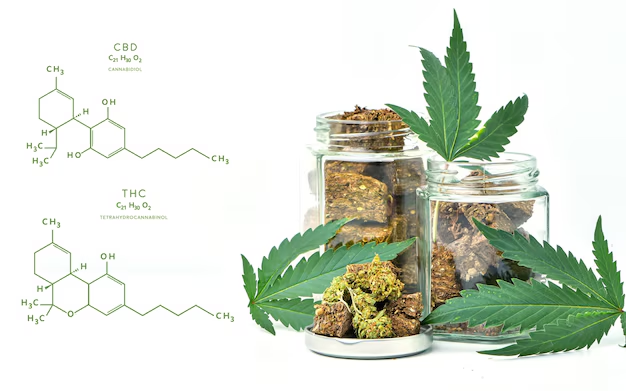
The choice among cannabis extraction solvents depends on the outcome you expect. Every solvent will affect the product quality, purity, and economy of the extraction process. Here are the factors to consider:
1. Purity & Efficiency
Irrespective of the solvent you are choosing for cannabis extraction, purity and efficiency remain paramount. An ideal solvent can effectively separate cannabinoids and terpenes from plant material without introducing contaminants. Efficiency measures how well the solvent extracts the desired compounds from plants in optimal quantities while minimizing the co-extraction of unwanted substances.
2. Safety & Compliance
Safety and compliance regulations will vary depending on the type of solvent you will use. For instance, hydrocarbons like butane and propane are highly flammable, which makes them a safety risk. That is why federal and local regulations regarding these solvents are stringent. Also, your staff will need training to handle such solvents safely. On the other hand, solvents like CO2 are much easier to handle and do not pose risks of fire accidents.
3. Cost & Scalability
Economic viability remains a decisive factor when selecting cannabis extraction solvents, especially for commercial operations. Factor initial investment, operational costs, and scalability of your setup will be crucial in determining the best solvent. Solvents like ethanol and supercritical CO2 are more suitable for large-scale industrial extraction.
4. Solvent Selectivity
Another criterion for selecting the solvent is selectivity. Different solvents have varying affinities for specific compounds in cannabis. For instance, if you are looking for the best solvent for CBD extraction or producing full-spectrum extracts, distillates, or isolates, CO2 is the ideal solvent. As the choice of solvent can significantly impact the final product’s composition and properties, explore the selectivity.
5. Environmental Impact
Sustainability should be one of your core principles. Select solvents that can be recycled and do not produce too much residue. It will significantly minimize their environmental impact. Consider factors such as the carbon footprint of solvent production, the potential for recycling, and the ecological effects of their use and disposal when choosing.
Common Solvents Used in Cannabis Extraction
1. Hydrocarbons (Butane, Propane)
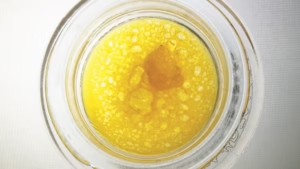
Hydrocarbon solvents are widely used in commercial cannabis extraction operations. Butane and propane are the industry’s two most commonly used hydrocarbons due to their low boiling points. Both these solvents are non-polar compounds, which makes them highly efficient in extracting cannabinoids and terpenes. Due to their low boiling points (butane: -0.5°C, propane: -42°C), hydrocarbons allow efficient extraction at low temperatures, which helps preserve heat-sensitive compounds.
2. Ethanol

Ethanol is a versatile and popular solvent in the cannabis industry. Effective for both small and large-scale operations due to its ability to produce full-spectrum extracts.
The molecular structure of ethanol has both a polar hydroxyl group and a non-polar ethyl group. It allows the extraction of a wide range of compounds from cannabis, including both polar (like chlorophyll) and non-polar (like cannabinoids) substances. Check out our guide on the top 5 ethanol solvents used in cannabis extraction.
3. CO₂ (Supercritical and Subcritical)

CO2 is an inert gas that can be a highly efficient solvent for cannabis extraction, especially in its supercritical state. In this state, it acts as liquid and gas, dissolving various compounds. Additionally, due to its safety profile and ability to produce clean extracts, it has gained high popularity. It is also one of the best solvents for CBD extraction due to its selectivity and purity.
4. Methanol & Acetone

While less common, methanol and acetone are also sometimes used in cannabis extraction. Most commonly, they are used in research settings or for specific product formulations. Methanol is a polar protic solvent and can extract polar compounds efficiently. Acetone is a polar aprotic solvent that can effectively dissolve various organic compounds.
5. Water-Based Extraction

Water-based extraction methods, such as ice water extraction and steam distillation, offer solventless alternatives for producing specific cannabis concentrates. When heat and pressure are applied, water can act as a polar protic solvent to separate compounds from plant material. Also, ice water extraction is a technique to separate trichomes from the plant material without losing volatile compounds.
Pros and Cons of Each Solvent
1. Hydrocarbons (Butane, Propane)
Pros:
- Highly efficient solvents for extracting cannabinoids and terpenes
- Produces potent extracts with excellent flavor and aroma retention due to profile preservation
- Relatively low-cost operations make them suitable for both small and large-scale operations
Cons:
- Highly flammable and explosive, posing significant safety risks
- Strict regulations and extensive safety measures
- Residual solvents in final products can affect product safety.
2. Ethanol
Pros:
- Recognized as safe (GRAS) by the FDA, ensuring regulatory compliance
- Full-spectrum extraction at a much lower cost
- Versatile in terms of extraction temperature, allowing for different extraction profiles
Cons:
- Can extract water-soluble compounds such as chlorophyll
- A higher boiling point affects the ability to extract heat-sensitive compounds
- Not as selective as other solvents
Click Here to Know More about Cold Ethanol Extraction Process: Techniques, Benefits, and Applications
3. Supercritical CO₂
Pros:
- Non-flammable and environmentally friendly
- Highly selective for targeted compound extraction
- Produces clean extracts with minimal residual solvent
Cons:
- High initial equipment cost, making it unfit for smaller operations
- Specialized equipment increases operational complexity
- It may not be as efficient in extracting some terpenes
4. Methanol & Acetone
Pros:
- Highly effective at extracting polar compounds
- Best for cannabinoid isolation for research
- Relatively low boiling points for easy removal
Cons:
- Toxic requiring stringent safety measures and handling protocols
- Cannot produce full-spectrum extracts
- It may require additional processing
5. Water-Based Extraction
Pros:
- No chemical solvents, appealing to health-conscious consumers
- Environmentally friendly and sustainable
- Minimal regulatory hurdles compared to chemical solvents
Cons:
- Limited efficiency in extracting oil-soluble cannabinoids
- Generally has lower yields
- Cannot result in full-spectrum extracts
Advanced Extraction Techniques and Innovations
While existing cannabis extraction methods are effective, the innovation in the industry is improving the efficiency and ability to target more compounds from plant material.
1. Hybrid solvent systems for optimized extraction
There is an increased interest in hybrid solvent systems combining the benefits of multiple solvents in one system. For example, a CO₂-ethanol hybrid system can leverage the selectivity of CO₂ with the efficiency of ethanol. This can optimize extraction yield and quality, making the cannabis process highly cost-effective.
2. Cryogenic ethanol extraction for terpene preservation
Cryogenic ethanol extraction is an advanced extraction technique that involves using ultra-low temperatures for separating cannabis compounds. This technique helps preserve volatile terpenes that are usually lost during conventional ethanol cannabis extraction. It overcomes the limits of traditional extraction and results in more flavorful and aromatic extracts.
3. Continuous flow extraction and automation
Continuous flow extraction systems are gaining traction in the cannabis industry. These extraction systems are designed to allow for constant, automated extraction. Such a system improves efficiency and consistency in large-scale operations. Rootsciences is a market leader in offering solvent cannabis equipment with automation features that increase throughput and enhance safety by reducing human exposure to solvents and potentially hazardous conditions.
Safety and Regulatory Compliance in Cannabis Extraction

When choosing the solvent for cannabis extraction, also consider the safety and compliance regulations to ensure you do not face challenges in operations.
1. FDA, OSHA, and GMP standards for solvent use
The cannabis extraction industry faces very stringent regulatory standards as compared to other sectors. If you are producing cannabis products for human consumption, the Food and Drug Administration (FDA) sets guidelines for solvent use for such products. Irrespective of the legal status of cannabis in your state, workers in a cannabis extraction facility are still covered under the workplace safety laws as laid down by The Occupational Safety and Health Administration (OSHA). Similarly, Good Manufacturing Practice (GMP) standards ensure consistency and quality in production processes.
Compliance with these standards is essential to keep your business operations legal and ensure consumer safety.
2. Residual solvent testing and compliance guidelines
Residual solvent testing is another critical aspect of quality control in cannabis extraction. Especially if you are working with hydrocarbon solvents that can be harmful if ingested. Check the acceptable limits for residual solvents in cannabis products in your jurisdiction. For example, California’s Bureau of Cannabis Control sets specific limits for solvents, including butane, propane, and ethanol.
Consumers should always ask for third-party lab testing results to ensure the product meets these guidelines through proper purging techniques.
3. Best practices for handling, storage, and worker safety
Ensure that you follow the best practices for solvent handling and storage. It will ensure worker safety and regulatory compliance. This includes:
- Proper labeling and storage of solvents in approved containers and locations
- Strict regular inspection of equipment and storage facilities
- Regular maintenance of extraction equipment
- Comprehensive training programs on handling explosive solvents like hydrocarbons for all personnel involved in extraction processes
- Implementation of emergency response plans for potential spills or accidents
- Mandatory use of appropriate personal protective equipment (PPE) by staff
- Regular air quality monitoring in extraction facilities
Environmental Sustainability in Extraction
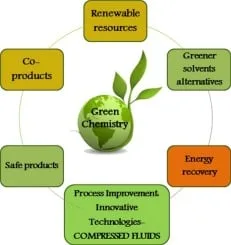
1. Carbon footprint of different solvents
The environmental impact of cannabis extraction solvents varies significantly. CO₂, for instance, has a relatively low carbon footprint, as it can be efficiently recycled into the system. Hydrocarbons and ethanol have higher environmental costs due to their production processes and potential for emissions during use.
Manufacturers must consider the lifecycle analysis of the chosen solvents, from production to disposal, to make more environmentally conscious decisions.
2. Solvent recovery and recycling technologies
Solvent recovery systems should be standard in your extraction operations. These systems capture and purify used solvents, minimizing their waste and reducing the environmental impact and operational costs over time. Advanced closed-loop systems for hydrocarbon extraction and CO₂ recycling in supercritical extractions are some examples of solvent recovery technologies.
3. Emerging green alternatives and solventless methods
The cannabis industry is investing and continuously exploring greener alternatives to traditional solvents. Green alternatives include:
- Bio-based solvents such as 2-Methyltetrahydrofuran (2-MeTHF)derived from renewable resources
- Enhanced water-based extraction techniques
- Solventless extraction methods like rosin pressing and mechanical separation
These extraction methods aim to reduce the industry’s environmental impact, making eco-friendly production of high-quality concentrated products possible.
Conclusion
Selecting the best solvent for cannabis extraction is a decision that depends on various factors, including the desired end product, operation scale, local regulatory environment, and environmental considerations. Currently, traditional solvents used for THC extraction, like hydrocarbons and ethanol, remain popular due to their efficiency. Still, the industry is also exploring more sustainable methods like supercritical CO₂ extraction and greener alternatives for their safety and environmental benefits.
Ultimately, the ideal solvent for cannabis extraction is the one that balances efficiency, safety, compliance, and environmental impact while meeting the specific needs of the product and market.



